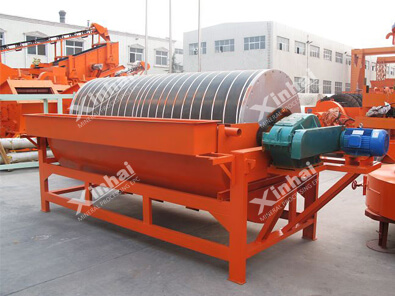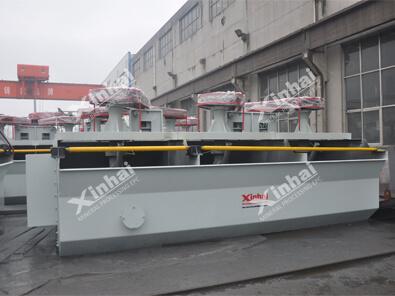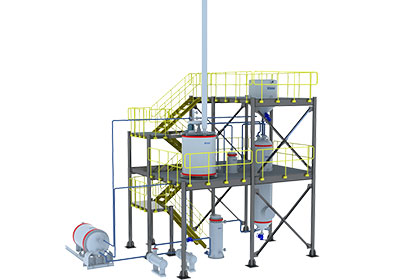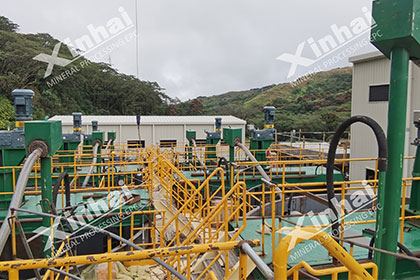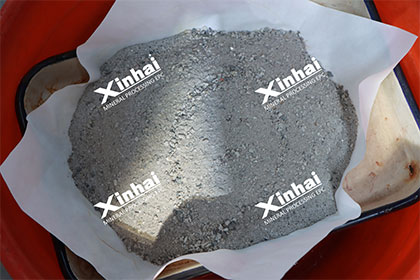Ultimate Guide of Silica Sand Processing
 Essow
Essow
 Jun 18, 2022
Jun 18, 2022
 3796
3796
If you want to know more details about equipment, solutions, etc, please click the button below for free consultation, or leave your requirements!
Quartz ore processing means removing or reducing the harmful impurities and acquiring quartz concentrates for smelting or other industrial needs. The commonly used purification processes for high-purity quartz sand include washing and classifying, scrubbing, magnetic separation, flotation, acid leaching, and microbial leaching.
This is a complete guide to quartz ore processing solutions and equipment.
01 Classification of Quartz Ore
BackThe main component of quartz ore is SiO2, which is colorless and transparent with a hard texture, often contains a small amount of impurities, and becomes a translucent or opaque crystal. Quartz is a mineral resource with very stable physical and chemical properties, and the crystal is an oxide mineral of the trigonal system.
Quartz is widely distributed in nature and has various origins. At present, there are 7 types of mineral deposits that can be used as industrial quartz mineral resources: natural crystal, quartz sandstone, quartzite, vein quartz, powder quartz, natural quartz sand and granite quartz.
Among them, vein quartz and quartzite have little impurities, and are usually used to produce high-purity or ultra-high-purity quartz sand, which is generally used in high-end fields. Natural quartz sand is often used in glass, ceramics and foundry fields due to the high content of impurities and the poor quality.
Quartz sand products can be divided into ordinary quartz sand, refined quartz sand, high-purity quartz sand and fused quartz sand according to their quality.
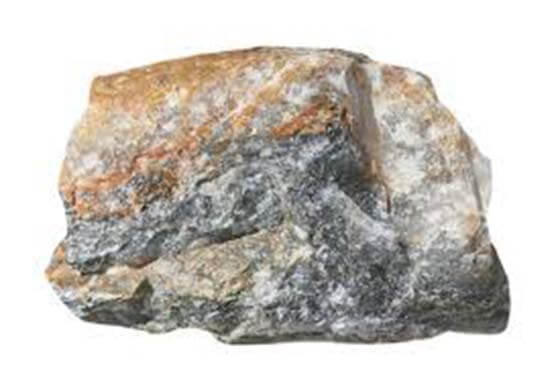
(Quartz Ore)
02 Quartz Ore Beneficiation Methods
BackIn actual production, the quartz sand beneficiation process can be divided into dry beneficiation and wet beneficiation. The dry beneficiation products are of low quality and are mostly used as building materials, while the wet beneficiation process is complex and the products are of high quality. It can be said that all high-quality silica sand is produced by wet beneficiation process.
The commonly used purification processes for high-purity quartz sand include washing and classifying, scrubbing, magnetic separation, flotation, acid leaching, and microbial leaching.
#1 Washing and Classifying
For silica sand containing a large amount of clay minerals, washing and classifying should be carried out before beneficiation to remove clay substances, improve the beneficiation efficiency, and reduce the grade of impurity minerals such as iron and aluminum.
In addition, the finer the grain size of the quartz sand, the higher the grade of SiO2 in the quartz sand, so washing and classifying can better separate the quartz sand of different grades.
#2 Scrubbing
For the thin-film iron and adhesive impurity minerals existing on the surface of quartz sand, the removal effect of washing is not significant, so we need a scrubbing process to remove them.
Scrubbing is to remove the thin film iron, bonding and muddy impurity minerals on the surface of quartz sand by means of mechanical force and abrasive peeling force between sand grains, and further scrubs the mineral aggregates that have not become monomers, and then further purify the quartz sand by classifying process.
The factors of the mechanical scrubbing effect of quartz sand mainly depend on the internal structure and configuration of the scrubbing machine, followed by technological factors, including scrubbing time and scrubbing concentration.
The sand scrubbing concentration between 50%-60% has the best effect, and if the concentration is too high, it will increase the difficulty of quartz sand purification to a certain extent. If the time is too long, it will increase the wear and tear of the equipment, increase the energy consumption and increase the cost of beneficiation and purification.
#3 Magnetic Separation
Quartz sand is a non-metallic material. In order to ensure the purity of the finished material, the metallic impurities contained in the quartz sand, such as hematite, limonite and biotite, must be removed.
According to the magnetic strength of impurities in quartz sand, they are divided into strong magnetic minerals (such as magnetite) and weak magnetic minerals (such as limonite, biotite, hematite, etc.), so different process configurations are required.
For weak magnetic impurities, we can use a strong magnetic separator of more than 10,000 Oe; for strong magnetic impurities, we can use a medium magnetic separator for good results.
In the case of a certain magnetic field intensity, the more magnetic separation times, the better the iron removal effect, and vice versa. Secondly, after the magnetic separation intensity reaches a certain level, even if the magnetic field intensity is increased, the iron removal effect will remain unchanged. The finer the particle size of the finished quartz sand, the better the magnetic separation effect.
We have an article to introduce magnetic separation in details, click the link to check it.
#4 Flotation
Usually, common mineral impurities in quartz sand, such as feldspar, mica and other silicate minerals, are mostly removed by flotation process. Quartz sand flotation can not only remove mica and feldspar minerals, but also flotation of phosphorus, iron and other minerals, and can also remove secondary iron mixed in crushing and grinding.
The quartz sand flotation method mainly includes fluorine flotation and fluorine-free flotation. Among them, fluorine flotation is carried out in the acidic pH range using cationic collectors and hydrofluoric acid activators.
Fluorine-free flotation is to use the difference in the structure of quartz and feldspar to reasonably adjust the ratio and dosage of anion and cation mixed collectors, and use their different Zeta potentials to preferentially float feldspar to achieve separation.
We could use the three-stage flotation process to remove mica minerals and feldspar minerals from the quartz sand respectively.
The first-level flotation is to float iron-containing muddy substances from the ore slurry using a corresponding reagent system under a neutral or weakly acidic environment.
Secondary flotation is to float mica minerals and the conjoined body of mica and quartz from the slurry under a neutral or weakly acidic environment using a corresponding reagent system.
Tertiary flotation is to float feldspar minerals and the conjoined body of feldspar and quartz from the slurry under the neutral or weakly acidic environment using the corresponding reagent system.
#5 Acid Leaching
Acid leaching utilizes the feature that quartz is insoluble in acid (except HF), and other impurity minerals can be dissolved by acid solution.
Acid leaching commonly used acids include sulfuric acid, hydrochloric acid, nitric acid and hydrofluoric acid, and reducing agents include sulfurous acid and its salts.
The study found that the above acids have good removal effect on non-metallic impurity minerals in quartz, but acid types and concentrations have a significant effect on different metal impurities. It is generally believed that various dilute acids can remove Fe and Al significantly, while the Ti and Cr should be treated by acid leaching with concentrated sulfuric acid, aqua regia or HF. Usually we use the mixed acid composed of the above acids to remove impurity minerals by acid leaching. Considering the dissolution effect of HF on quartz, the concentration of HF generally does not exceed 10%.
In addition to the acid concentration, the amount of acid, acid leaching time, temperature and slurry stirring can all affect the effect of quartz acid leaching. The control of various factors of acid leaching should be based on the final grade requirements of quartz, and the concentration, temperature and dosage of acid should be reduced as much as possible, and the acid leaching time should be reduced, so as to achieve quartz purification at a lower cost.
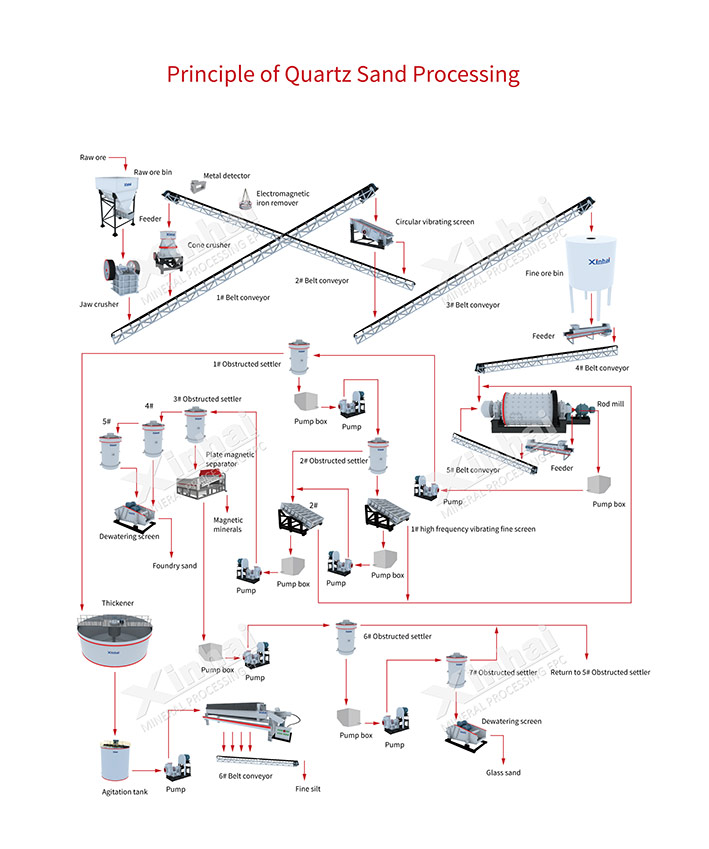
(Quartz Sand Processing Flow Chart)
03 Quartz Ore Beneficiation Process and Required Equipment)
Back#1 Crushing and Screening Stage
After the ore with larger particle size such as vein quartz or quartzite is mined, the particles with smaller grayscale and higher purity are firstly selected from the original ore, and then the selected ore is sent to the jaw crusher or cone crusher for crushing. The particle size of the crushed products is ensured by the circuit formed by the circular vibrating screen and the crushing equipment.
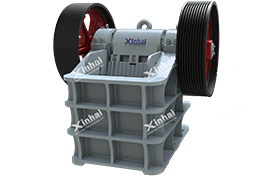
(Jaw Crusher)
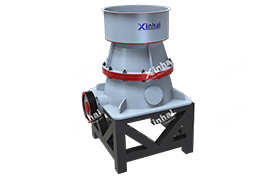
(Cone Crusher)

(Circular Vibrating Screen)
#2 Grinding Stage
The quartz sand grinding operation usually adopts one stage or two stages of grid ball mill + overflow ball mill, and the second stage grinding operation and spiral classifier or hydrocyclone form a closed loop to ensure the fineness of grinding.
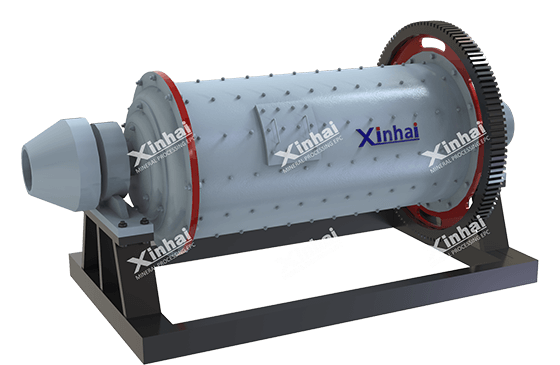
(Ball Mill)
#3 Mineral Processing Stage
After obtaining quartz sand of a certain particle size, in order to obtain industrial quartz sand with higher purity, a certain process needs to be used for further purification.
The commonly used purification processes for high-purity quartz sand include washing and classifying, scrubbing, magnetic separation, flotation, acid leaching, and microbial leaching.
1) Washing and Classifying
Washing and classifying stage can be carried out just after grinding, using classifier to reach the effect of washing and classifying at the same time.
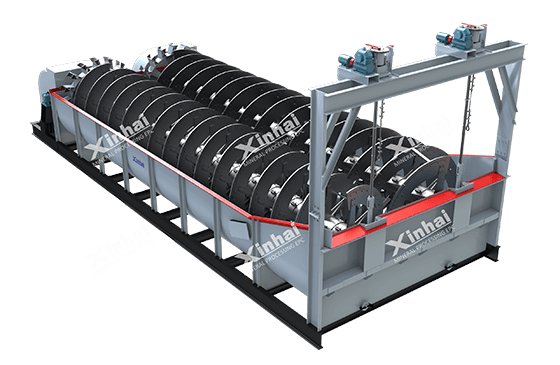
(Submerged Double Spirals Classifier)
2) Scrubbing
We usually use mineral scrubbers for dispersing the mineral mud, removing and washing the impurities on mineral surface. The commonly used scrubbers are mechanical scrubber and rod type scrubber.
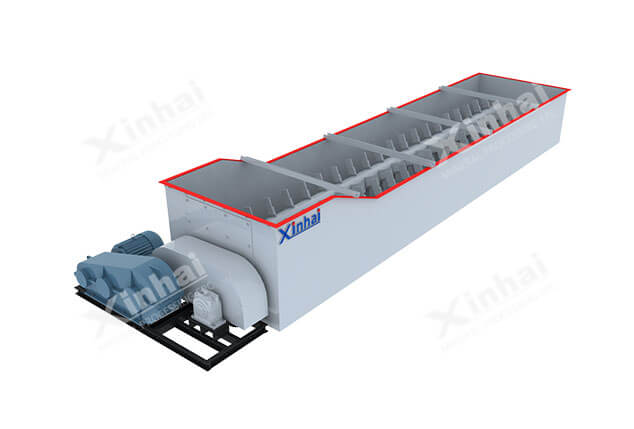
(Spiral Chute Scrubber)
3) Magnetic Separation
Magnetic separation is carried out in the non-uniform magnetic field provided by the magnetic separation equipment. After the ore enters the separation space of the magnetic separation equipment, it moves along different paths under the combined action of magnetic force and mechanical force (including gravity, centrifugal force, fluid resistance, etc.) and we can intercept the ore pulp separately to obtain different products.
We have an article about 6 kinds of magnetic separation equipment, click the link to check it.
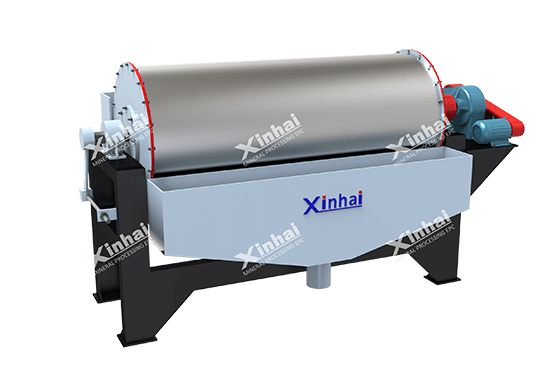
(Magnetic Separator)
4) Flotation
Froth flotation is a beneficiation process that is based on the difference in physical and chemical properties of the mineral surface.
We have an article of detailed introduction of flotation process and flotation cells, click the link to check it.
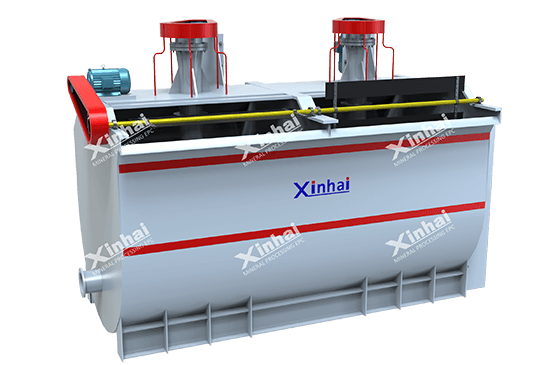
(Flotation Machine)
5) Acid Leaching
Reactor-type mixing equipment should be treated with acid corrosion resistance. Plastic containers in static immersion should pay attention to the reaction time and acid concentration ratio. The cleaning bucket with stirring should be used when cleaning. Barrels can be stainless steel or plastic. Water enters from the bottom of the cleaning barrel and overflows from the surface of the cleaning barrel. In this way, the cleaning effect is good and fast, which can ensure that each quartz sand particle is cleaned.
#4 Tailings Processing
After we get the high grade silica sand, we’ll have to process the tailings to avoid environment pollution. In addition to ore, tailings also contain a large amount of water. If it is directly discharged, it will not only cause environmental pollution, but also easily cause tailings dam break and bring safety risks. Therefore, it is very necessary to dewater the tailings before the tailings discharge. We mainly adopt tailings dry stacking technology to dewater and concentrate mineral tailings in the mineral processing plants and avoid bad impact on the environment.
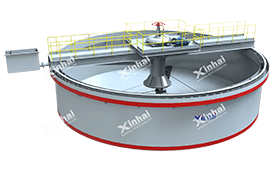
(Thickener)
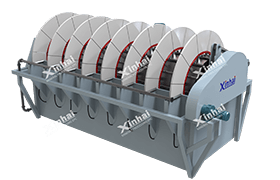
(Ceramic Vacuum Filter)
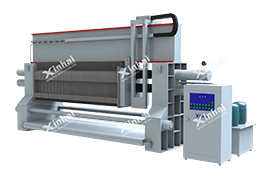
(Filter Press)
04To Wrap Up
BackThe above are the silica sand processing solutions and equipment. If you have other questions or want to customize mineral processing solution and equipment, please contact our online service or leave your message.
 +86 183 3575 8886
+86 183 3575 8886 pinklaurabao@gmail.com
pinklaurabao@gmail.com




 Message
Message Chat Now
Chat Now


